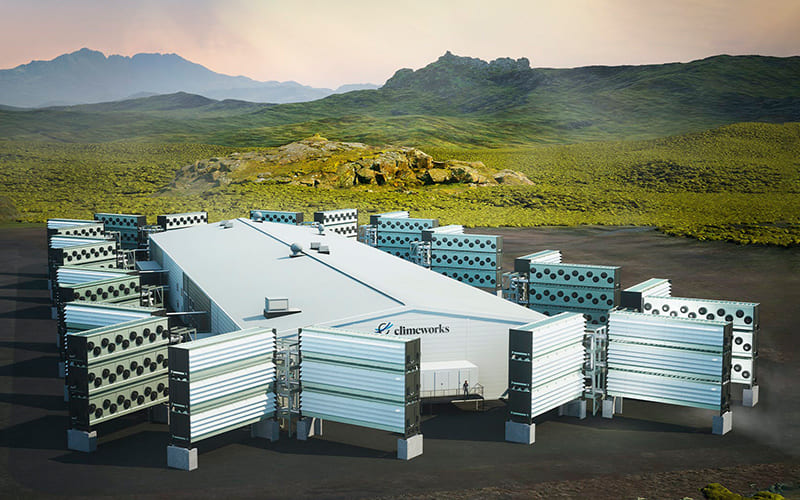Technology
Direct air capture and storage (DAC) technology
Country
Iceland
Application in details
Direct air capture and storage (DAC) technology
The facility consists of eight collection containers with an annual capacity of 500 tons each. The containers are arranged around a central processing hall, which houses all the electrical equipment, such as the processing unit, allowing the facility to be controlled and monitored from a distance.
The heat and electricity required to run the direct air capture process is supplied by the Hellishide geothermal power station. The 10m high blocks consist of horizontal disks of sorbing material stacked on top of each other. The surrounding wind blows air through the discs and the CO2 binds to the sorbent. The units are stacked like sea containers.
The units draw in ambient air using fans, passing it through what the company calls a «highly selective filtering material». When the filter material has absorbed enough CO2, the unit closes and the filter is heated to around 100°C, causing the gas to be released, the exhaust is then collected.
Scalability
Location independent: The concentration of CO₂ in the air is the same all over the world. This means that DAC plants can be located anywhere as they do not need to be tied to an emission source. They only need to be placed next to a renewable energy source and in a place where CO₂ can be stored.
Efficient use of land: our plants require much less land use than any other machinery. For example, as of 2019, the land use required by BECCS ranged from 2,900 to 17,600 square feet for every 1 metric ton of CO₂ per year; DAC plants require only 0.5 to 15 square feet.
Fast scaling: Compared to trees, one plant is about 1000 times more efficient. This means it does the work of 200,000 trees while taking up 1000 times less space.
Current application sites/areas
A direct carbon capture plant Climeworks' Orca located next to the Hellisheiði power plant in Hengilly, Iceland, became fully operational in September 2021
